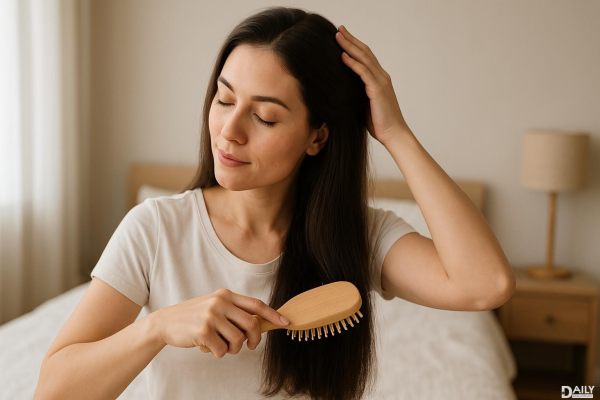If you've recently taken the plunge and shaved your head, you're probably wondering how long it'll take for your hair to grow back. The short answer? It depends—but on average, hair grows about half an inch per month. That means you're looking at roughly six months to a year to get back to a short, styled look, and possibly longer if you're aiming for shoulder-length locks. But let's break it down further because, like most things in life, hair growth isn't one-size-fits-all.

Hair growth happens in cycles, and understanding these phases can help you predict your regrowth timeline. There are three main stages: anagen (growth), catagen (transition), and telogen (resting). The anagen phase is where the magic happens—your hair follicles are actively producing new strands. This phase can last anywhere from two to seven years, depending on genetics. The longer your anagen phase, the longer your hair can grow before shedding. After that, hair enters the catagen phase, a brief two-week period where growth slows. Finally, the telogen phase lasts about three months before the hair falls out and the cycle starts again. When you shave your head, you're not resetting these cycles—you're just cutting the visible part of the hair. So, regrowth speed depends on where your follicles are in their natural cycle.
While the average growth rate is half an inch per month, several factors can speed things up or slow them down. Genetics play the biggest role—if your family members have fast-growing hair, you probably will too. Age also matters; hair growth tends to slow as we get older. Nutrition is another key player. A diet rich in protein, iron, zinc, and vitamins (especially biotin) can support healthy hair growth. On the flip side, stress, hormonal imbalances, and certain medical conditions (like thyroid disorders) can put the brakes on regrowth. Even external factors like climate and hair care habits make a difference—dry, damaged scalps don’t produce hair as efficiently as well-moisturized ones.
Let’s get into the nitty-gritty of what your hair journey might look like post-shave. In the first month, you’ll likely see a light stubble—maybe an eighth of an inch if your hair grows at an average pace. By month three, you’ll have enough length to run your fingers through (about 1.5 inches), though styling options are still limited. At the six-month mark, you’re looking at around three inches—enough for a buzz cut or very short textured styles. Hit the one-year milestone, and you’ll have roughly six inches of growth, which opens up more styling possibilities like pompadours or messy crops. If you’re patient enough to wait two years, you could reach 12 inches or more, depending on your growth rate.
While you can’t fundamentally change your genetics, there are ways to optimize your hair growth. Scalp massages increase blood flow to the follicles, which may encourage faster growth. Using gentle, sulfate-free shampoos and avoiding excessive heat styling can prevent breakage, making your hair appear longer over time. Some people swear by supplements like biotin or collagen, though results vary. Staying hydrated and managing stress (yes, yoga and meditation might help) also contribute to healthier hair. Just don’t fall for miracle growth serums—most don’t live up to the hype.
If your hair isn’t growing back at all after several months, or if you notice patchy regrowth, it’s worth consulting a dermatologist. Conditions like alopecia, fungal infections, or scarring can interfere with hair growth and may require treatment. Similarly, if you’ve experienced sudden hair loss before shaving, a doctor can help identify underlying causes like hormonal imbalances or nutritional deficiencies.
So, while shaving your head might feel like a dramatic change, remember that hair is always growing—just at its own pace. Whether you’re rocking the bald look by choice or waiting for your locks to return, patience and good hair care will get you where you want to be. And hey, if nothing else, you’ve got a killer excuse to experiment with hats and headscarves in the meantime.
























